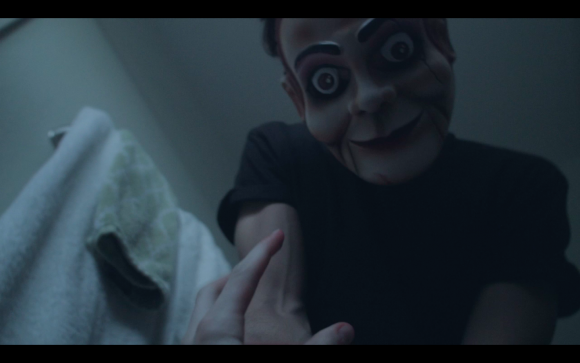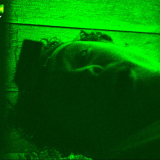Interterm Classes Dig Into Off-Beat Topics
April 18, 2016
During the last interterm (which seems like ages ago now!), we had some incredible classes that really showed off the diversity of topics taught here at Dodge College. Here are some brief bits from some of them, since summer sessions are around the corner, and some of these off-beat topics may come up again!
BRINGING THE CREATIVITY OF IMPROV TO THE SCREEN
Usually, making things up on the spot isn’t the best idea when it comes to filmmaking. However, students were able to explore that possibility of creative brainstorming on the spot in the Improv Filmmaking class, taught by Mary Beth Fielder.
The students used improvisation to deepen the rehearsal process, develop script ideas, and to create films on the spot by creating a scene- by- scene outline and allowing actors to improvise while the cameras rolled.
“It’s a great way to help actors break out of a pre-conceived performance and jump into the unpredictable nature of moment-to-moment life,” says Fielder. “Improvisation provides an intuitive, experiential way of developing characters and stories.”
After acting, shooting, and coaching each other in improvised scenes, the students completed a group project based on a story idea which had a role for everyone in the class. They then turned the story into an outline of the basic set- up and action. Using the film school as their location, they shot in chronological order, shooting one take for each scene. Fielder wanted to help students let go of their inhibitions, and to allow themselves to be vulnerable. “I wanted them to trust their creative instincts,” says Fielder, “and learn techniques for shooting improvised films while producing compelling work.”
HORROR ON THE SCREEN: WHAT SCARES YOU?
Students in Roy Finch’s Modern Horror Workshop got a crash course in fear over interterm. Starting with the birth of modern horror, and using modern directors as examples, the class looked at films to find out what evoked the sensations of fear, and dread, in an audience. “Why do audiences gain pleasure from un-pleasurable emotions?” Finch asked his students.
To help them understand how to create tension on the screen, Finch showcased techniques, such as tilted angles and sound design, used by various horror filmmakers. Following their study of the work of horror masters, students each presented a film of their choice to explore the use and effect of horror tropes in filmmaking.
To chart their own reactions to scary material, each student also kept a daily fear journal, to learn more about their darkest fears, exploring the nature of fear itself, and ways in which it can be utilized in storytelling. Finally, they also created short horror films, showing a practical application of the horror tropes they learned, using them to create tension in short sequences.

TAKING ON THE CHALLENGES OF FILMING IN THE WILD
Sally Rubin’s documentary production course covered techniques and methods for producing and editing environmental and wildlife films. However, instead of just sitting around learning about it in the classroom, Rubin took her students into the field, allowing them to produce their own material to explore the challenges of capturing real life in nature.
Most of their weekends were spent around locations in Southern California including Joshua Tree National Park, to give students hands-on opportunities in wildlife documentary filmmaking.
“I want my students to learn how to construct documentary film in these genres, especially emphasizing the many challenges, such as weather and changes in an animal’s behavior, that may come up in the field and how to overcome them.”
Each group of students completed two films. The first was a short portrait film of their group using no voices and no faces that represented an accurate portrayal of everyone in the group. This helped the students learn how to create a story without words using the environment around them, much like when filming wildlife. The second was a seven- minute documentary filmed at Joshua Tree, which they filmed over a three-day camping trip. The topics ranged from the story of the endangered California desert tortoise to a portrait of an environmental activist working to preserve the desert to the story of a desert refuge where visitors can find peace in the natural world.
EXPLORING DISNEY, FROM ANIMATION TO EMPIRE
Although everyone knows the Disney brand, there is still a mountain of misinformation, urban myths, and mysteries surrounding the company’s history, development, and operations. Dawn Fratini’s Disney: From Animation to Empire class explored the company’s evolution from a small animation studio to a global entertainment empire.
“The Disney Company, as a topic, is rich and complex: it involves Hollywood history, television history, gender and cultural studies, fan culture, media industries studies, and travel and leisure studies,” says Fratini. Using the historic “backbone” of the company’s legacy, the class looked at how the company affected America’s history using a variety of media studies methodologies.
One surprising bit of history was the story of how an animation strike led Disney to get involved in the Good Neighbor Program, created to help stem the rising tide of Nazism in South America. “The mere act of Walt (and company) visiting some countries in South America pushed the Nazi agenda to the side, because people were so excited to have Walt in their country,” says Fratini.
“The class was consistently full of surprises for me and for the students,” continues Fratini. “Not only did we learn new facts, but, covering such a broad range of Disney history within the context of American history, really vividly illustrated cultural and economic trends in ways not always expected.”


